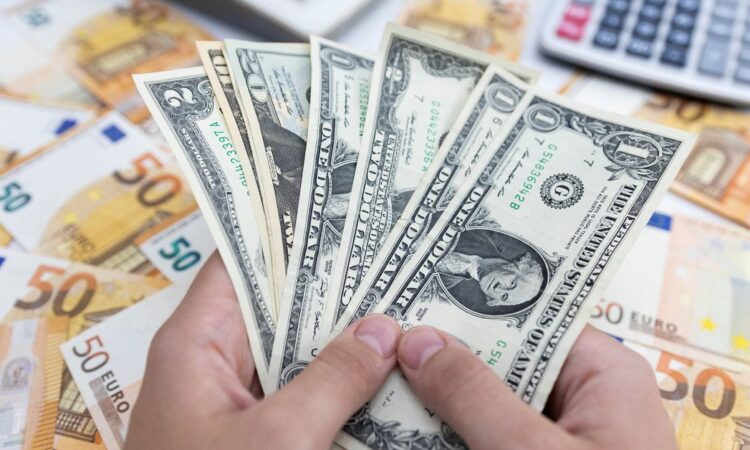
NEW YORK, April 3 (Reuters) – The dollar stumbled on Monday, surrendering earlier gains following unexpected oil output cuts from OPEC+, as data showed the U.S. economy continued to slow with declines in manufacturing and construction spending.
Data on Monday added to the narrative that the Federal Reserve is near the end of its rate-hike cycle.
An announcement on Sunday of output target cuts by the Organization of the Petroleum Exporting Countries (OPEC) and its allies, known as OPEC+, propelled oil prices higher. Brent crude last traded at $84.9 per barrel, up 5.7%.
The dollar initially rose after the announcement.
OPEC+ was expected to stick to cuts of two million barrels per day (bpd) which were already in place until the end of 2023, but instead announced further output cuts of around 1.16 million bpd.
The OPEC impact, however, was short-lived, as investors focused on monetary policy and the divergence between the Federal Reserve and other central banks, particularly, the European Central Bank.
“Our working thesis is that we would probably see the peak in the U.S. dollar sometime toward mid-year,” said Shaun Osborne, chief FX strategist, at Scotiabank in Toronto.
“That’s predicated on the view that peak inflation means peak Fed and that means peak U.S. dollar. But it’s quite possible that we may have seen that earlier than our forecast.”
Monday’s economic reports showed U.S. manufacturing activity in March slumped to its lowest level in nearly three years as new orders continued to contract. The Institute for Supply Management (ISM) said its manufacturing PMI fell to 46.3 last month, the lowest since May 2020, from 47.7 in February.
U.S. construction spending also weakened, down 0.1% in February after increasing 0.4% in January.
The dollar extended losses after Monday’s data.
On Monday, federal funds futures priced in a 65% chance of another 25 basis-point (bp) rate hike by the Fed in May. Futures traders have also factored in a pause in June and rate cuts by December.
In the euro zone, traders are pricing in around 60 basis points of further tightening by the ECB by the end of the year after data released on Friday showed an acceleration in core price growth in the euro area.
The euro was last up 0.6% at $1.0905, after touching a one-week low of $1.0788 earlier in the session.
“While it’s likely that the Fed is done or close to being done, we are going to see a little more tightening by the ECB. We therefore see euro/dollar hitting $1.10-$1.12 by the second half of the year,” Scotiabank’s Osborne said.
The dollar index , which measures the currency against a basket of six currencies including the euro, was down 0.9% at 102.01.
Focus this week will be on Friday’s U.S. jobs report, although many markets will be closed for the Easter holiday.
Against the Japanese currency, the dollar fell 0.3% to 132.44 yen , after earlier hitting its highest level since around mid-March.
Sterling firmed 0.8% at $1.2422, while the dollar dipped 0.% against the Swiss franc to 0.912 francs .
The risk-sensitive Australian dollar was last up 1.5% at US$0.6790 ahead of a Reserve Bank of Australia policy meeting on Tuesday. Markets have priced in an 85% chance the central bank will hold rates steady after 10 hikes. The Aussie dollar earlier hit a one-month high versus the greenback.
In cryptocurrencies, Dogecoin, a meme coin supported by Tesla Inc (TSLA.O) founder Elon Musk, soared 27% on Monday to $0.10 after Twitter’s webpage used the token’s dog icon instead of the social media website’s usual blue bird, market participants said.
========================================================
Currency bid prices at 3:58PM (1958 GMT)
Reporting by Gertrude Chavez-Dreyfuss; Additional reporting by Samuel Indyk in London and Ankur Banerjee in Singapore; Editing by Toby Chopra, Kirsten Donovan, Josie Kao and Richard Chang
Our Standards: The Thomson Reuters Trust Principles.






